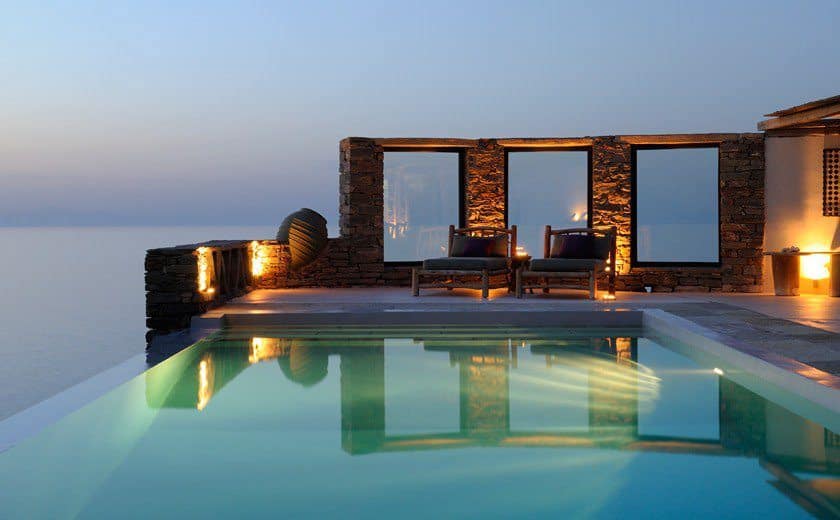A swimming pool can turn your backyard into a private oasis; however, before you dream of doing cannonballs into clear blue water, take a moment to truly gauge how much this cool amenity will set you back. Don’t focus just on the installation, either-there’s also maintenance, chemicals, and all the trimmings. Ready to make a splash? Check out these real-world costs.

Swimming Pool Prices: Know how Much Before You Diving In
Average pool price
According to experts and other estimates, the average price of a 32-foot-by-16-foot in-ground swimming pool is roughly $22,000. But this varies widely by geography; you may have to shell out more or less money depending on your geographical area. “In Florida, swimming pool prices are 1 / 2 of what they are in Virginia,” says Michele Ament, a design and sales consultant at Town and Country Pools in Springfield, VA. Why the gap? In-ground pools really are a luxury in the Northeast, compared with consistently warmer areas. In Miami and Dallas, for example, just about everyone has a pool.
Nonetheless, there are financial benefits to building an outdoor swimming pool. It can be a selling feature to buyers in the future-and an in-ground pool adds on average 8% to the value of your home, according to the National Association of Realtors®.
Materials
In-ground pools can be made from three materials: vinyl liner, fiberglass, and concrete. They vary in price. A lot.
Vinyl liner pool ($10,000 to $25,000): This is the least expensive pool to install, because vinyl is less expensive than fiberglass and concrete. The trade-off? A vinyl liner lasts on average 7 to 15 years and costs between $2,500 and $3,500 to replace-an expense you wouldn’t incur with a fiberglass or concrete pool. Also, a vinyl pool adds less value to your home in comparison with fiberglass and concrete.
Fiberglass pool ($20,000 to $60,000): This pool is constructed off-site in a factory and then transported and installed at your home. It needs the lowest maintenance, because the pool shell is nonporous-meaning you need fewer chemicals to sanitize the water. (There’s also less algae growth with fiberglass.) However, because fiberglass pools are designed from molds, they’re not customizable. Furthermore, as they’re transported to your home by a truck, shipping restrictions limit the width of the fiberglass pool shell to 16 feet.
Concrete pool (starts at $50,000): “Every concrete pool is made custom,” says Stephen Treese, president of Blue Haven Pools in Las Vegas. “A concrete pool is constructed in your backyard, so there’s no limitation to shape, size, or design.”
Consequently, it’s also the most costly form of in-ground pool. But Ament says you get what you pay for. “Most concrete pools have a lifetime warranty,” she adds. However, you need to resurface the pool’s interior finish every 10 to 25 years, costing you between $5,000 and $15,000 dependant upon the size of the pool.
Chemicals
Saltwater chlorination system ($1,500 to $2,500): This system’s chemical combination permits you to not spend as much money on chlorine, saving you an average of $300 to $400 annually. One caveat: The cell, which is the part that converts the salt to chlorine, should be replaced every 5 to 7 years. You are likely to pay $400 to $650.
Heating
Utilities ($85 to $1,460 per year): The cost varies, dependant upon your locale and temperature setting, according to the U.S. Department of Energy. Want a heated pool? You have two options: Install a heat pump, or set up a gas or electric line. It’s difficult to put a dollar figure to installation costs, says Treese, since they vary significantly depending on the type of heater, where the gas line is located, and the size of the pool.
Geography also plays a part if you’re using a heat pump: Heating an outdoor pool to 80 degrees in Phoenix from March to October costs $875, whereas heating the same size pool in Boston from only May to August costs $1,075, according to Energy.gov.
Extras
Unlike fiberglass swimming pools, that have a limited variety of design features, concrete pools provide a variety of options, including lighting, vanishing edges, tanning ledges, benches, steps, slides, grottoes, waterfalls, jets, and-of course-diving boards.
Diving board: $500 to $1,500
LED lights (per bulb): $900 to $1,200
Swim spa: $13,000 to $25,000
Hot tub: Starts at $4,000 for two-person, $8,000 for six-person models
Decking: $2,000 to $6,000. Most homeowners build pool decks made of concrete, stone, tile, or wood.
Building permit
Most municipalities require homeowners to obtain a building permit for a swimming pool. (Some also require inspections.) Permit costs can vary substantially. International building codes also require you to install a fence around the pool, says Treese. “You install a fence for safety reasons,” he says. “You don’t want strangers or animals wandering into your pool.”
Professional pool service
Weekly pool service ($84 to $278): Many people pay companies to take care of their pool’s basic maintenance, including checking chemicals, cleaning filters, and vacuuming.
Homeowners insurance
Upping your liability coverage from $100,000 to $1 million costs an additional $200 to $300 annually, according to the Insurance Information Institute.
Standard homeowners insurance policies have a minimum $100,000 of liability coverage; however, the institute recommends upping your plan to $1 million coverage if you build an in-ground pool.
Because geography plays a significant role in construction costs-particularly labor and materials-these figures are merely rough estimates of what you can expect to pay. To find the best deal, we recommend you speak with several pool contractors for estimates before determining which company you want to hire. We have worked with several local companies here in the Tampa Bay and Surrounding Areas that can assist you. Feel free to call us at 813-300-7116 or you can always just click here and we will be in touch.